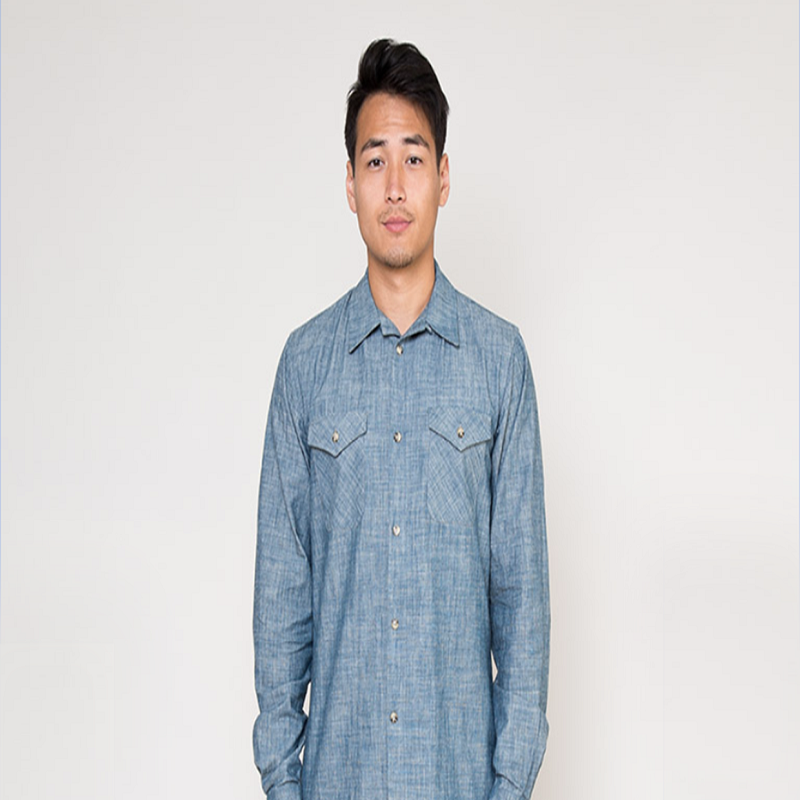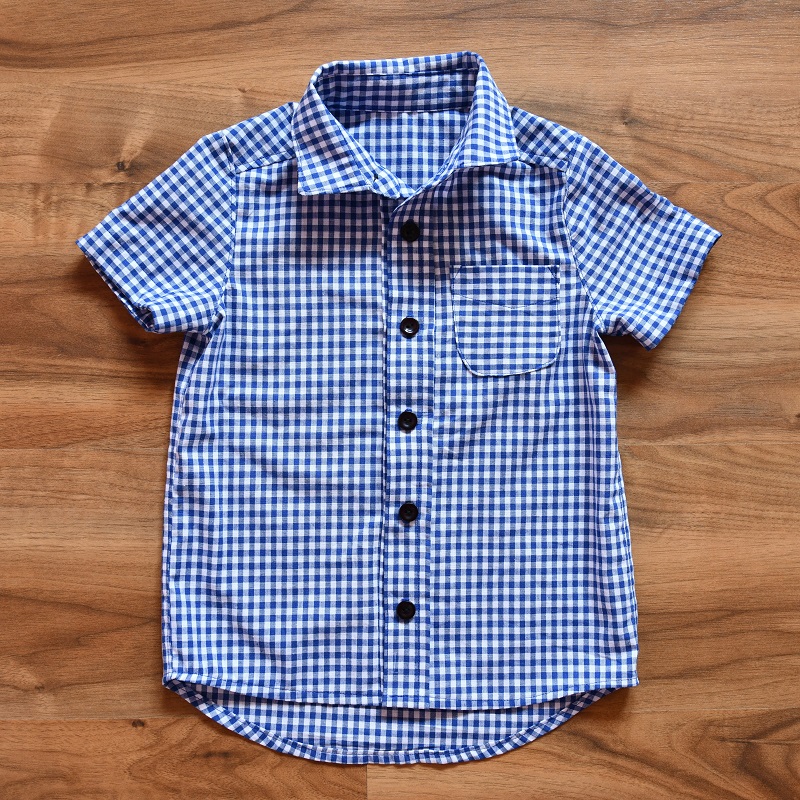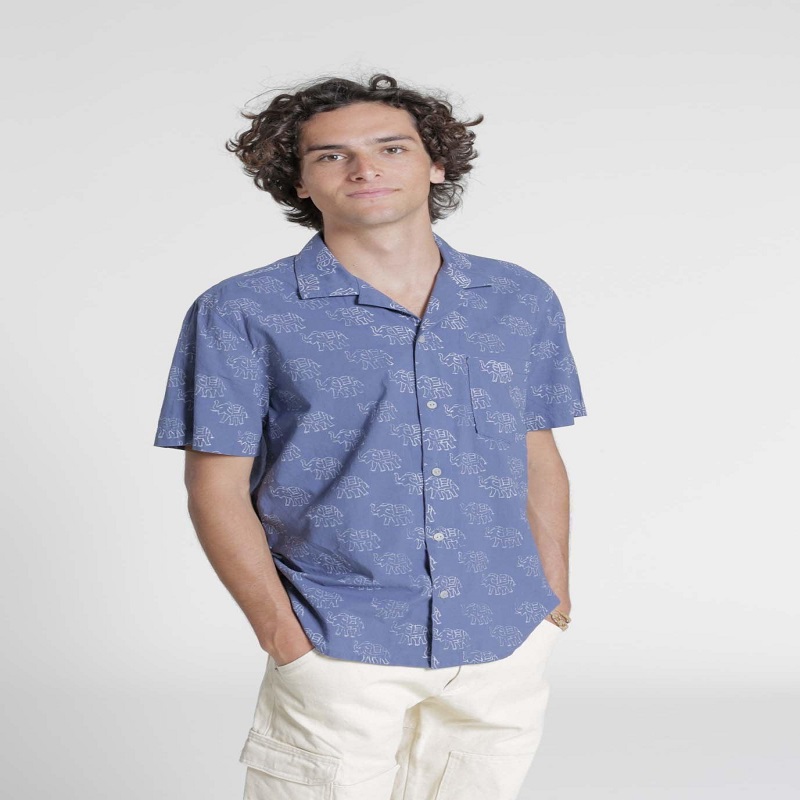How to sew a shirt? Sewing a shirt can be a rewarding experience, as you get to create a piece of clothing that fits your body perfectly and reflects your personal style. Whether you are a seasoned seamstress or just starting out, sewing a shirt is a project that can be accomplished with a little time and effort. In this guide, we will provide step-by-step instructions on how to sew a shirt from start to finish.

Gathering Materials
The first step in sewing a shirt is to gather all the necessary materials. Here is a list of items you will need:
- Shirt pattern
- Fabric of your choice
- Sewing machine
- Thread
- Scissors
- Pins
- Iron
- Buttons or snaps (if your shirt design includes them)
- Interfacing (if your shirt pattern calls for it)
Choosing the Right Fabric
When selecting fabric for your shirt, it’s important to consider the type of shirt you want to make and the season in which you will be wearing it. For a casual shirt, you might choose a lightweight cotton or linen fabric. For a more formal look, you could opt for a silk or satin fabric. Take into consideration the drape, weight, and texture of the fabric to ensure that it will work well for the shirt you have in mind.
Preparing the Pattern and Fabric
After selecting your fabric, you will need to prepare your pattern and fabric. Lay out your fabric on a flat surface and pin your pattern pieces to it according to the pattern instructions. Make sure to pay attention to the grainline of the fabric and place your pattern pieces accordingly. Then, use your scissors to carefully cut out each pattern piece, being mindful to cut accurately along the lines.
Sewing the Shirt
Once your pattern pieces are cut out, you can begin sewing your shirt. Follow these general steps to construct your shirt:
- Stitch the darts, if your pattern calls for them, to create shape in the garment.
- Sew the shoulder seams together.
- Attach the sleeves to the shirt, easing in any fullness as needed.
- Sew the side seams of the shirt, from the bottom hem to the sleeve edges.
- Hem the bottom of the shirt and the sleeves.
- Attach any collar, cuffs, or other additional details to complete the shirt.

Adding Buttons or Snaps
If your shirt design includes buttons or snaps, this is the time to attach them. Measure the spacing for the buttons and sew them on using a sewing machine or by hand. For snaps, follow the package instructions for attaching them securely to the garment.
Finishing Touches
Once your shirt is fully constructed, it’s time to add any finishing touches. This may include pressing seams, trimming loose threads, and giving the entire shirt a final press with an iron to ensure it looks polished and professional.
What are the styles of sew a shirt
Sewing a shirt is a wonderful way to express your creativity and personal style. Whether you are a beginner or an experienced seamstress, there are numerous styles and techniques to choose from when it comes to creating your own unique shirt. In this article, we will explore some of the most popular shirt styles and provide you with tips and tricks for sewing them at home. From classic button-downs to trendy off-the-shoulder tops, there is a shirt style for everyone to try. So, let’s get started and dive into the world of shirt sewing!
Classic Button-Down Shirt
The classic button-down shirt is a timeless wardrobe staple that can be dressed up or down for any occasion. When sewing a classic button-down shirt, it is important to pay close attention to details such as collar construction, button placement, and sleeve cuffs. Additionally, choosing the right fabric for your shirt can make a huge difference in the overall look and feel of the garment. Crisp best cotton sweaters fabric is a popular choice for classic button-downs, but you can also experiment with silk, linen, or even flannel for a more casual look.
To get started, you will need a well-fitted shirt pattern, fabric, buttons, interfacing, and basic sewing supplies such as scissors, pins, and a sewing machine. Once you have all the necessary materials, follow the instructions on your chosen shirt pattern and take your time to carefully construct each aspect of the shirt. Pay close attention to the finishing details such as topstitching, hemming, and attaching the collar and cuffs for a polished and professional look.

Trendy Off-The-Shoulder Top
Off-the-shoulder tops have been all the rage in recent fashion trends, and sewing your own off-the-shoulder top is a fun way to stay on-trend while adding a personal touch to your wardrobe. When sewing an off-the-shoulder top, it is important to choose a fabric with the right amount of drape and stretch to ensure a comfortable and flattering fit. Lightweight fabrics such as cotton lawn, rayon, or jersey knit are great choices for off-the-shoulder tops.
To create your off-the-shoulder top
You will need a well-fitted off-the-shoulder pattern, fabric, elastic, and basic sewing supplies. Start by cutting out the pattern pieces and carefully sewing the seams together to create the main body of the top. Then, construct the elastic casing to create the off-the-shoulder effect and finish off the hems for a clean and polished look. With a little patience and attention to detail, you can create a stylish off-the-shoulder top that is perfect for any casual or dressy occasion.
Cozy Flannel Shirt
Flannel shirts are a must-have for the colder months, and sewing your own cozy flannel shirt is a great way to stay warm and stylish during the winter. When sewing a flannel shirt, it is important to choose a high-quality flannel fabric with a soft and brushed texture for maximum comfort and warmth. Additionally, paying attention to details such as plaid matching, button placement, and flat-felled seams can elevate the look of your flannel shirt and give it a professional finish.
To get started
You will need a well-fitted flannel shirt pattern, fabric, buttons, interfacing, and basic sewing supplies. Take your time to carefully cut out the fabric pieces and sew the seams together, paying close attention to the direction of the plaid for a cohesive look. Finish off the hems, cuffs, and collar with clean topstitching and attach the buttons for a cozy flannel shirt that is perfect for layering over a t-shirt or wearing on its own.
Sewing a shirt can be a rewarding and creative experience
Allowing you to bring your own unique vision to life. Whether you prefer a classic button-down, a trendy off-the-shoulder top, or a cozy flannel shirt, there are countless styles and techniques to explore when it comes to shirt sewing. By choosing the right fabric, paying attention to details, and taking your time to construct each aspect of the shirt, you can create a garment that is not only stylish and fashionable but also fits you perfectly. So, grab your sewing supplies and let your creativity run wild as you sew your own unique shirt styles!

Conclusion
Sewing a shirt can be a fun and satisfying project for anyone who enjoys working with fabric and creating their own garments. With the right materials, tools, and some patience, you can sew a shirt that fits you perfectly and reflects your personal style. Follow these step-by-step instructions and soon you will be wearing a shirt that you made with your own two hands. Happy sewing!
